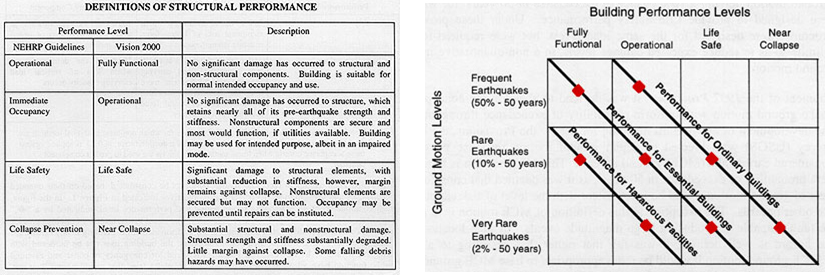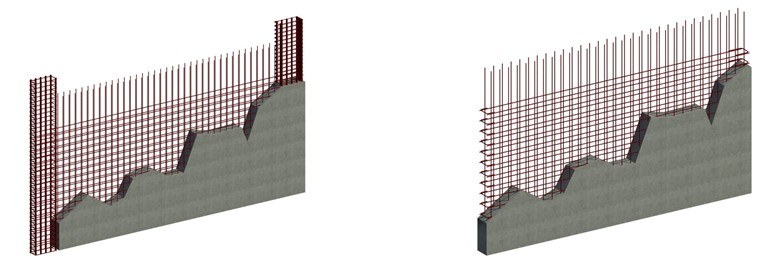Advanced Seismic Design
ENGINEERING SPECIALTY

Advanced seismic design is a new design methodology which uses nonlinear time-history analyses. This method allows the designer to meet the intended use and performance objectives of the building while also satisfying Building Code requirements without having to rely on code-prescriptive design provisions. This new method is mostly applied to tall buildings in zones at high risk for seismic activity.
Background
Current Codes: CBC, IBC, UBC, KBC
- Provide minimum provisions for design and construction of structures to resist effects of seismic ground motions
- “…to safeguard against major structural failures and loss of life, not to limit damage or maintain function” – UBC 1997 section 1626
Problem
- Definitions are non-quantitative
- Only one design earthquake
- Provisions not specifically associated with any particular performance level
- Leads to wide variation in interpretation and performance
Current Seismic Design Problem and Issue
- Interdependency of Strength and Stiffness
- Period Calculation
- Ductility Capacity and Force-Reduction Factors
- Ductility of Structural Systems
- Relationship between Strength and Ductility Demand
- Structural Wall Buildings with Unequal Wall Lengths
- Structures with Dual Load Paths
- Relationship between Elastic and Inelastic Displacement Demand
Non-Linear Time History Analysis
Advanced seismic design is based on non-linear time history analyses (NLTHA). As computational technology has developed, complex tall buildings have become easier to analyze with nonlinear material properties. The benefit of using nonlinear material is that it gives more precise load distributions and load paths. Dynamic analysis using time-history input considers more seismic scenarios than any other dynamic method.

Target Performance
The Vision 2000 document recommends that buildings be constructed, based on their intended occupancies and uses, to meet the performance objectives. Each combination of an earthquake return period and performance level, indicated by a red diamond, represents a specific design performance objective. The intent is that ordinary buildings provide a low risk that life be endangered as a result of the performance of the building in any earthquake likely to effect it.

Optimizing Reinforcement and Element
Advanced seismic design carefully analyzes the building performance and then specifies elements of strength and stiffness where they are needed. This results in being able to provide a more precise allocation of load-resisting structural members. Using advanced seismic design method allows for a reduction in member size and the amount of material needed, as compared to code-prescriptive based design.



